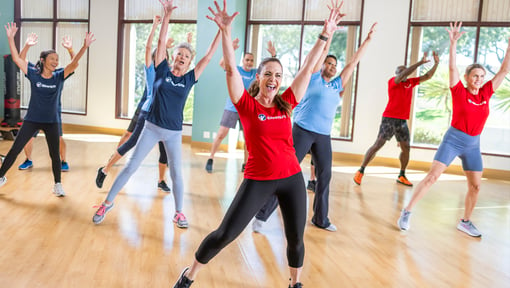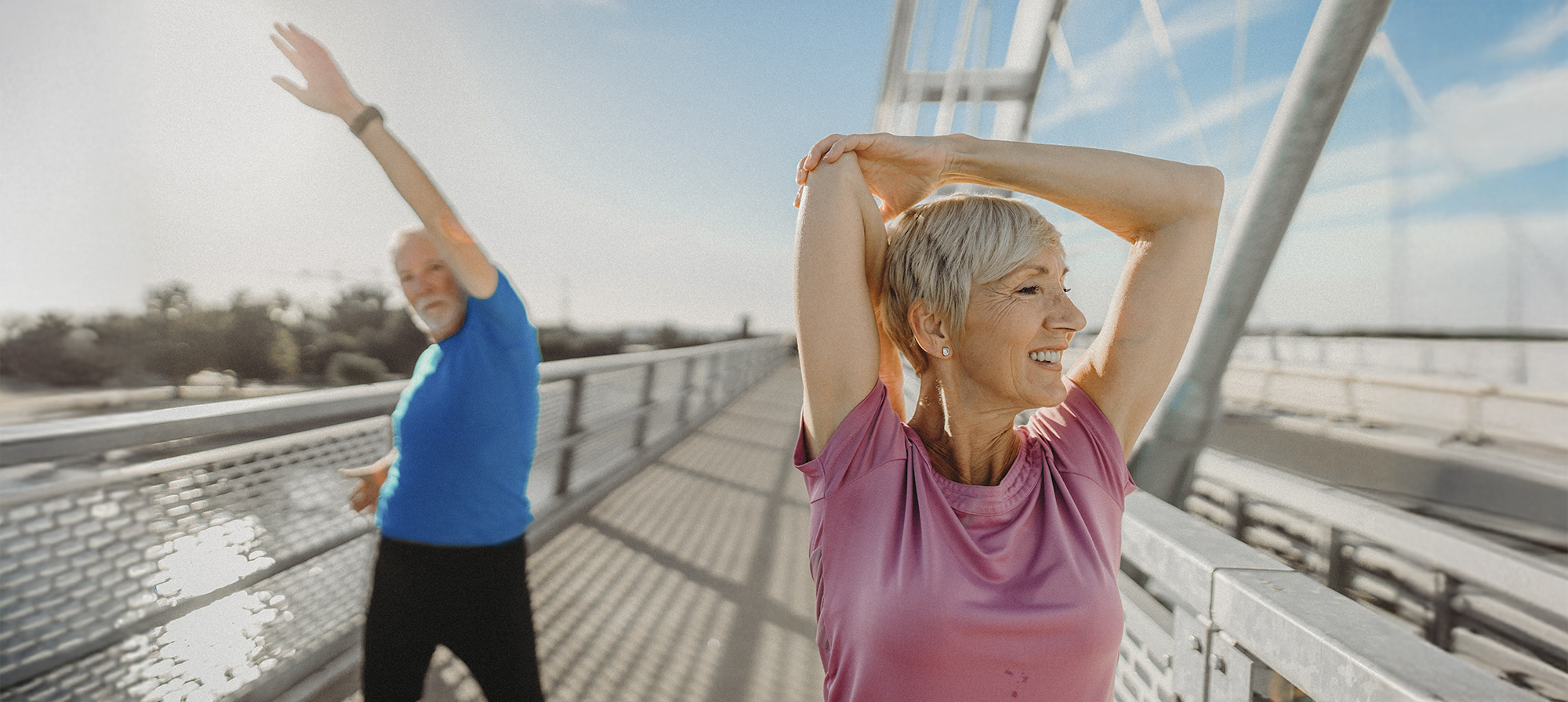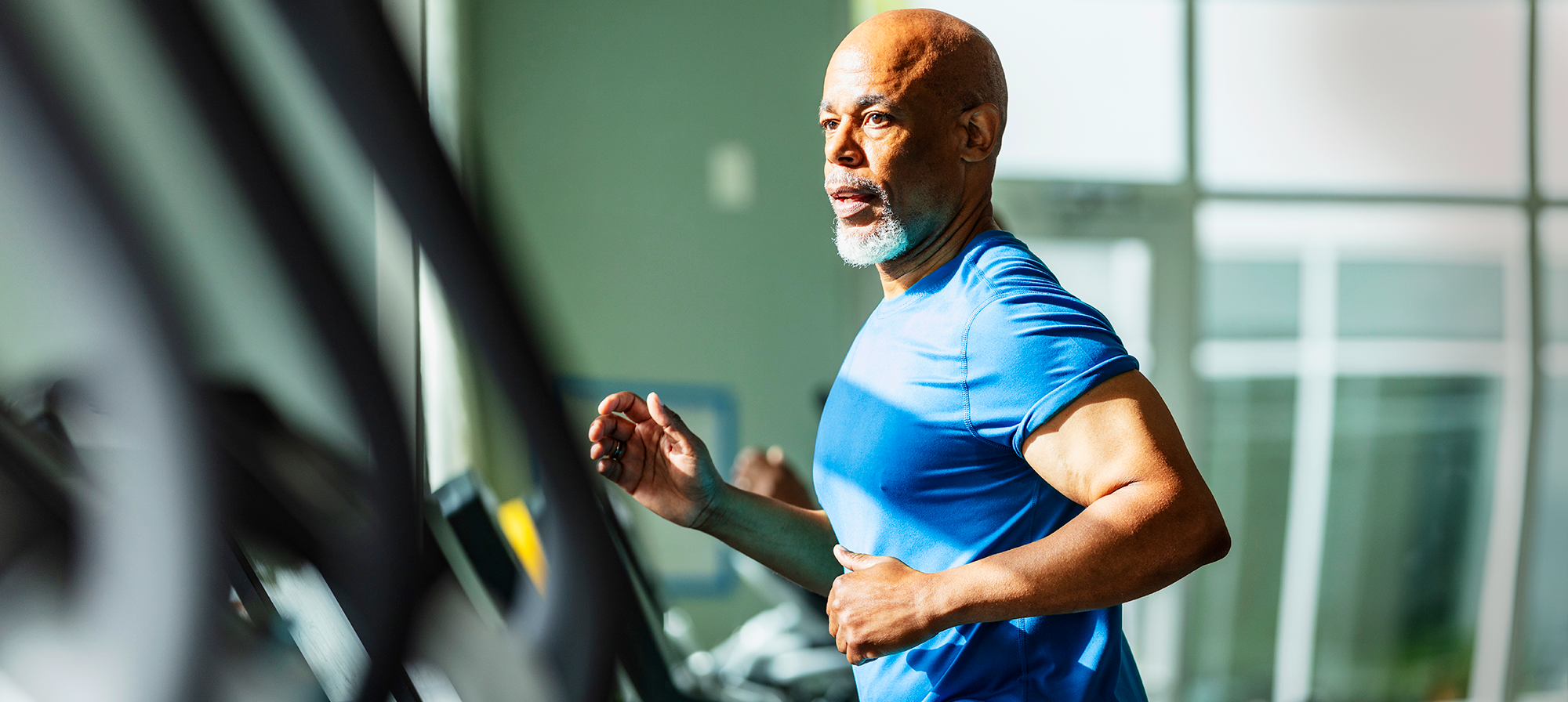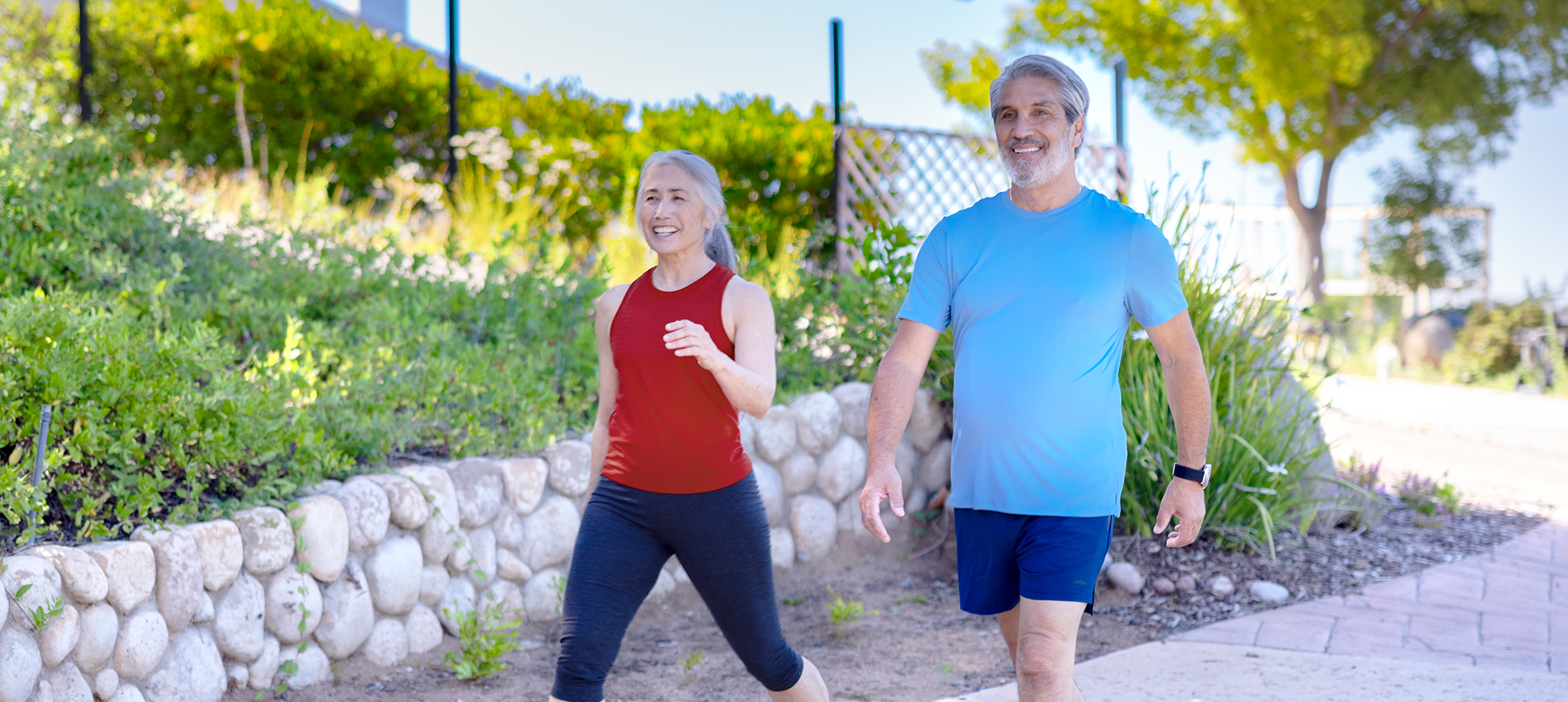Use the anti-inflammatory benefits of exercise—including aerobic exercise and strength training—to help manage inflammation as you age.
The anti-inflammatory benefits of exercise are a key element of healthy aging. As little as one 20-minute session of aerobic exercise or strength training can fight inflammation. You may not even be aware that inflammation is having an impact on your health. But it’s worth looking into!
At your next exam, talk with your doctor. Go over your history and tell your doctor about any unusual or new symptoms you may be having. They may suggest tests or changes to your food plan or exercise plan if they determine the symptoms point to an inflammatory state.
A closer look at how inflammation works shows why keeping it in control can help your health.

What is inflammation?
Inflammation is not always a bad thing. It helps fight against disease and aids in healing when you’re hurt. This complex system moves quickly into high gear when needed. And the swelling and chemicals of inflammation dissipate when the crisis is resolved.
The problem is that sometimes the inflammatory response sticks around and then can do more harm than good. It can impact your body negatively. And it may raise the risk for heart disease, high blood sugar, asthma, joint problems, dementia, and more.
Sometimes inflammation increases with age, too.
What is inflammaging?
Many people deal with a health issue known as “inflammaging.” This refers to the chronic inflammation that occurs with aging. Yes, there’s even a word for inflammation due to aging. And the problem is that inflammaging can raise the risk of chronic conditions, disability, frailty, and premature death. It’s well known that inflammaging is a cause of heart health issues.

The beauty of working out as an anti-inflammatory action
Your daily habits are the best way to manage inflammation. A food plan with plenty of anti-inflammatory foods helps. And, based on research, exercise is gaining more attention as a great way to fight inflammation.
Activity can ease inflammation, no matter its cause. One reason is that exercise acts as an anti-inflammatory by affecting the immune system. It works on white blood cells and regulates chemical “messengers” called cytokines. These cause inflammation for good reasons. But they can stick around too long and lead to health issues.
Researchers have known for a long time that exercise has anti-inflammatory benefits. Recent studies show that even a short workout can help. And while inflammation may increase right after an intense workout, over the longer term, exercise lowers levels of inflammation.

The beauty of working out as an anti-inflammatory action
Another reason exercise acts as an anti-inflammatory is that it can reduce visceral fat, which is linked to inflammation. Visceral fat is the fat found deep in the abdominal area and around your organs. It is linked to many health issues. Some of these are heart disease, certain cancers, and type 2 diabetes.
Good news, though! Losing visceral fat isn’t different than losing weight in general, and it responds well to exercise and a healthy food plan.
To lose visceral fat, here’s what experts suggest:
- Keep on moving. Aim for 30 minutes of activity most days. This could be walking or bicycling. Take the stairs instead of the elevator.
- Do strength training. Work out with free weights to build muscles.
- Try high-intensity interval training (HIIT). Clear this more strenuous form of workout with your doctor first. HIIT involves a mix of high-intensity exercise with relatively short active rest breaks. Cycling or aerobic exercise can also be a form of HIIT. Just make sure you are going between moving faster and moving more slowly.
Consistency is the key. So, create a routine you enjoy and can stick with.

A few things to keep in mind as you start to be more active
Check with your doctor before trying new ways to exercise. This is vital if you have any chronic health conditions that may be affected by movement.
Start new exercises slowly. Then bump up the intensity and length of time of your exercises.
The anti-inflammatory benefits of exercise are amazing. And you can find ways to be active that cost little and are fun. Check with your doctor or physical therapist and start now to work out in a way that can prevent or ease inflammation and allow you to live your healthiest, best life.

Not a Silver&Fit® member? Learn more about everything the program has to offer, including more helpful healthy living tips like this, here on our website.
This information is not intended to take the place of regular medical care or advice. Please check with your doctor before using this information or beginning any self-care program. Images used for this article do not depict any members of the Silver&Fit program.
References
Brubaker, M. (2017, January 12). Exercise … It does a body good: 20 minutes can act as anti-inflammatory. UC San Diego. https://today.ucsd.edu/story/exercise_it_does_a_body_good_20_minutes_can_act_as_anti_inflammatory
Dimitrov, S., Hulteng, E., & Hong, S. (2017). Inflammation and exercise: Inhibition of monocytic intracellular TNF production by acute exercise via β2-adrenergic activation. Brain, Behavior, and Immunity, 61, 60–68. https://doi.org/10.1016/j.bbi.2016.12.017
Ferrucci, L., & Fabbri, E. (2018). Inflammageing: Chronic inflammation in ageing, cardiovascular disease, and frailty. Nature Reviews. Cardiology, 15, 505–522. https://doi.org/10.1038/s41569-018-0064-2
Flynn, M. G., McFarlin, B. K., & Markofski, M. M. (2007, May). State of the art reviews: The anti-inflammatory actions of exercise training. American Journal of Lifestyle Medicine, 1(3), 220–235. https://doi.org/10.1177/1559827607300283
Gleeson, M., Bishop, N. C., Stensel, D. J., Lindley, M. R., Mastana, S. S., & Nimmo, M. A. (2011). The anti-inflammatory effects of exercise: Mechanisms and implications for the prevention and treatment of disease. Nature Reviews. Immunology, 11, 607–615. https://doi.org/10.1038/nri3041
Harvard Health Publishing. (2024, December 4) An action plan to fight unhealthy inflammation. https://www.health.harvard.edu/blog/an-action-plan-to-fight-unhealthy-inflammation-202205052739
Harvard Health Publishing. (2023, February 1). Easy ways to keep inflammation in check. https://www.health.harvard.edu/staying-healthy/easy-ways-to-keep-inflammation-in-check
Harvard Health Publishing. (2024, March 26). Taking aim at belly fat. https://www.health.harvard.edu/newsletter_article/taking-aim-at-belly-fat
Król, M., Kupnicka, P., Bosiacki, M., & Chlubek, D. (2022). Mechanisms underlying anti-inflammatory and anti-cancer properties of stretching—A review. International Journal of Molecular Sciences, 23(17), 10127. https://doi.org/10.3390/ijms231710127
Lombardo, M., Feraco, A., Bellia, C., Prisco, L., D'Ippolito, I., Padua, E., Storz, M. A., Lauro, D., Caprio, M., & Bellia, A. (2022). Influence of nutritional status and physical exercise on immune response in metabolic syndrome. Nutrients, 14(10), 2054. https://doi.org/10.3390/nu14102054
This article was written by Sharon Odegaard, edited by Stephanie Ruiz, and clinically reviewed by Jaynie Bjornaraa, PhD, MPH, PT, LAT, ATC, CSCS, CSPS, on June 24, 2025.




